Transforming lives through creative healing.
If you have a passion to help people through the healing power of art, the Art Therapy major from Carlow University can help you develop your skills to prepare for graduate-level work in art therapy. Our art therapy degree program is an interdisciplinary educational path that combines the principles of art and psychology to train students in using artistic expression as a therapeutic tool to help individuals process emotions, reduce stress, and improve mental well-being.
With Carlow’s location in the heart of Pittsburgh’s Innovation District, you’ll have convenient access to medical and therapeutic sites.
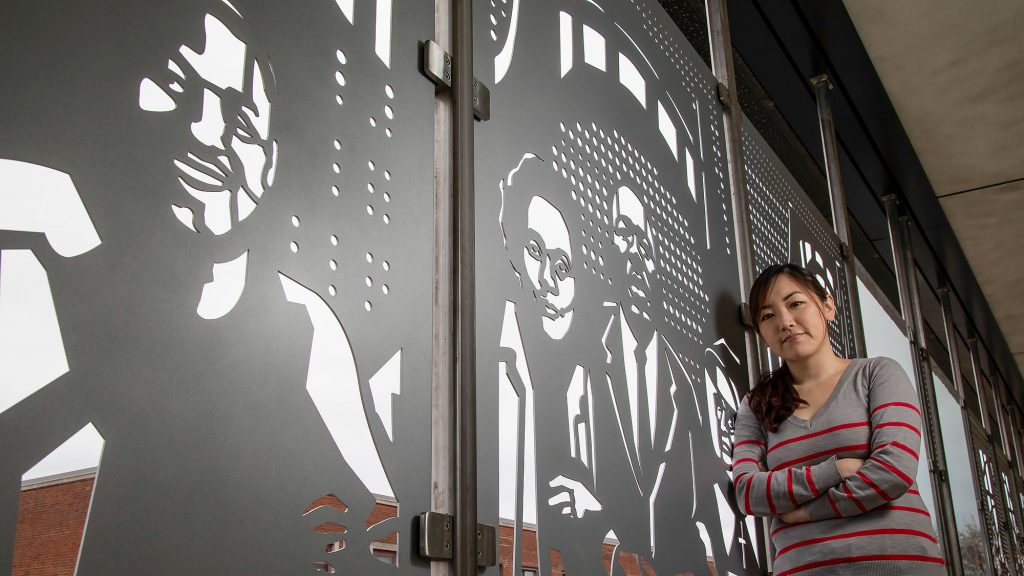
Degree:
Bachelor of Arts
Delivery:
On campus, some online
Campus:
Oakland
Transfer credits:
Up to 90 credits
Art Therapy major curriculum
The Art Therapy major curriculum consists of art, art therapy and psychology courses. You will have access to on-campus facilities such as the 2D and 3D studios, as well as the Carlow University Art Gallery, which showcases professional artists.
Internship opportunities are available at UPMC Children’s Hospital of Pittsburgh’s Dream Big Studio, a television and radio studio for children that is part of the hospital’s Creative and Expressive Arts Therapy program. Students are usually placed with an art therapist or psychologist.
Carlow’s Art + Design Program is a hub for innovation, creativity, and practical skill development through an emphasis on experiential learning. Studio art making and praxis lie at the core of our program. We understand that practice is essential for growth and development as an artist. Our studios, fabrication laboratory, and professional art gallery provide dynamic environments for you to experiment, explore new techniques, allowing you to manifest your ideas into tangible forms of expression. .
The art program part of the highly interdisciplinary Department of Art, Communication and English. As such we center storytelling and curating as vital skills in the art world, and our program recognizes their significance. Whether you aspire to become a curator, designer, or art educator, our courses in art history and curatorial studies will immerse you in the world of art narratives, cultural heritage, and exhibition curation. You’ll learn how to communicate the story behind artworks, contextualize them within historical and cultural frameworks, and curate engaging exhibitions that captivate audiences.
Artists, designers and creatives thrive in a supportive community where they can exchange ideas, receive feedback, and collaborate with like-minded individuals. Through group projects, collaborative exhibitions, and interdisciplinary workshops, you’ll have opportunities to collaborate with fellow artists, designers, and scholars, expanding your horizons and enriching your artistic practice and professional networks.
In addition to honing your artistic abilities, our program emphasizes the development of essential skills such as information literacy, critical thinking, and design thinking. We believe that artists have a unique ability to solve complex problems and make a positive impact on society. Our curriculum integrates ethics and social justice, allowing you to explore the role of art in promoting equality, inclusivity, and social change.
With our comprehensive undergraduate program serving as a strong foundation, you’ll have the opportunity to pursue advanced studies through our master’s degree program. Our master’s program provides a unique platform for you to specialize further in your chosen field of art. Under the guidance of distinguished faculty mentors, you’ll undertake advanced coursework, engage in critical discourse, and produce a culminating thesis or project that reflects your artistic vision and research interests.
The Art Program and Department of Art, Communication, and English aim to create an ethical, equitable, career-focused and student-centered academic institution for the 21st century.
Quick facts
- Study near prominent medical and therapeutic locations
- Gain real-world career experiences with an internship
- Build a foundation for graduate-level studies
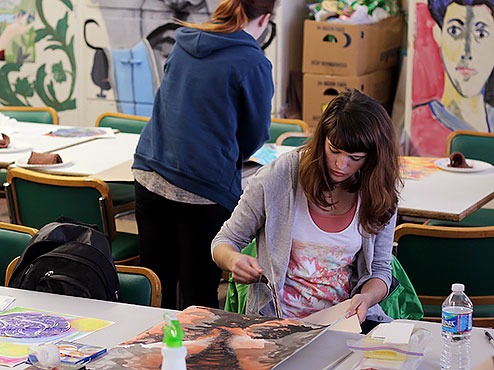
Alternate degree completion options
Accelerated
Fast track your way to a master’s by taking graduate courses as an undergraduate student. Course credits count toward both degrees. Apply for the accelerated option after your sophomore year.
Career Opportunities for art therapists
The art therapy major prepares students to pursue a master’s in art therapy, which is required to be an art therapist.
According to the U.S. Bureau of Labor Statistics, employment opportunities for recreational therapists, who often use art as part of their treatment plans, will grow 8% from 2019 to 2029, faster than average.
Admission requirements and application process
- Submit an application for admission. It is free to apply.
- Request that official transcripts from all current and previous institutions you’ve attended are sent directly to the Carlow University Office of Admissions.
- Must have a minimum 3.00 cumulative high school or 3.50 cumulative college GPA.
Apply
anytime
Start terms:
Fall, Spring & Summer
Art Program Learning Outcomes
1. Ethical and Socially Responsible Design: Graduates of this program will be able to demonstrate an understanding of ethical principles and social responsibility in design and art-making practices. They will have the ability to identify and analyze ethical and social issues related to their work, and to make informed decisions that take into account the impact of their art and design on society and the environment.
2. Interdisciplinary Collaboration: Graduates of this program will be able to work collaboratively across different disciplines to develop innovative and creative solutions to complex problems. They will be able to communicate effectively with team members from different backgrounds, and to integrate diverse perspectives and knowledge into their work.
3. Critical Thinking and Analysis: Graduates of this program will be able to analyze and evaluate art and design works critically and effectively. They will have the ability to think independently, identify and challenge assumptions, and articulate arguments in a clear and concise manner.
4. Information Literacy: Graduates of this program will be able to locate, evaluate, and use information effectively and responsibly. They will be able to navigate the complex landscape of information resources, and to understand the ethical and legal implications of using and sharing information.
5. Studio Art Making and Praxis: Graduates of this program will have the ability to create and produce art and design works that demonstrate technical proficiency, conceptual depth, and aesthetic innovation. They will be able to apply a range of techniques and methods to their work, and to experiment with new media and materials. They will also have the ability to reflect critically on their own art-making practices and to engage in ongoing self-reflection and evaluation.
6. Storytelling and Curating: Graduates of this program will be able to develop and communicate compelling narratives through their art and design works. They will have the ability to curate exhibitions and design experiences that engage and educate diverse audiences. They will also have the ability to use storytelling and curating as tools for social justice, activism, and community engagement.
Art Therapy faculty

Kimberly McMahon, MA Adjunct Lecturer

Sarah Zeffiro Program Director, Instructor of Art Education

Ethan Gagorik Adjunct Lecturer, Art

Kathy Kienholz Adjunct Lecturer, Art

Debra Kahler Adjunct Lecturer, Art
Contact Admissions
If you are interested in this major, our Admissions team is available to help you with the next steps, including scheduling an on-campus visit or attending an upcoming event.
Minor in Art Therapy
You can supplement your psychology or artistic training with an Art Therapy minor from Carlow University. The Art Therapy minor will give you an introduction to art basics and psychology essentials, including counseling, and foundational knowledge of theory and practice. Your learning experience will be supported by Carlow’s location near a comprehensive medical and therapeutic complex.
Art therapy curriculum
The minor requires a minimum of 18 credits, 9 of which must be taken at Carlow.
Required courses include:
- Ceramics
- Personality Theory
- Foundations of Art Therapy
Become a museum curator, archivist or art historian
You can use your passion for art and social justice and engage with big ideas with an Art History degree from Carlow University. The bachelor’s in Art History is grounded in the study of contemporary art and critical theory, focusing on the cultural and visual dimensions of social justice, as well as curatorial and museum studies.
You will cultivate skills in visual literacy, critical thinking and writing, explore curating as a form of activism, and learn about undergraduate research and exhibition development.
You will learn professional skills needed to work in museums, galleries and cultural organizations as well as broader fields such as education, law and nonprofit management. You will also be prepared to pursue a graduate degree in art history, museum studies, and conservation and preservation.
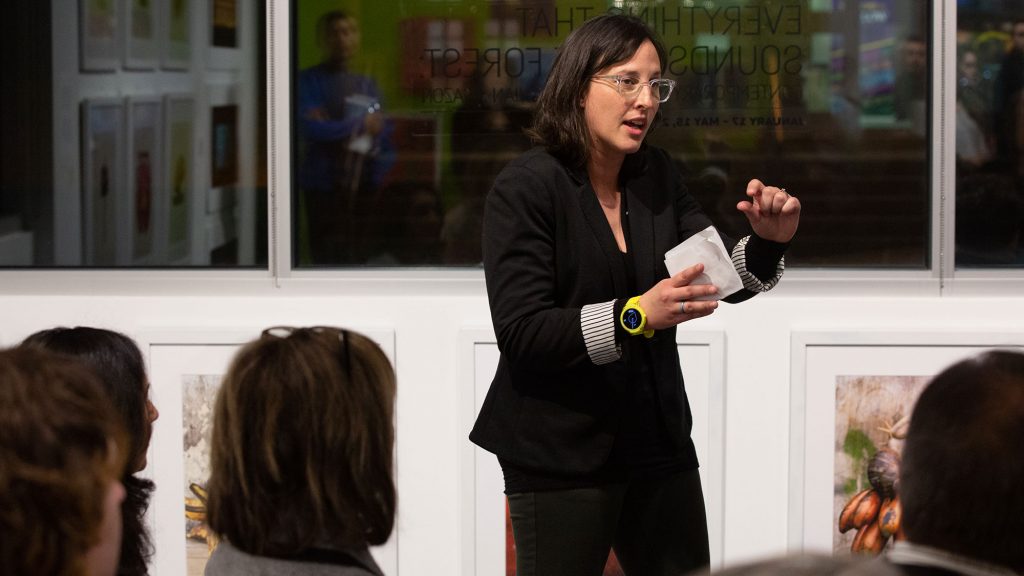
Degree:
Bachelor of Arts
Delivery:
On campus, some online
Campus:
Oakland
Transfer credits:
Up to 90 credits
Art history degree curriculum
You will be introduced to the study of visual culture, and cultivate skills in creative problem solving and problem seeking, critical thinking and exhibition making. You will take courses in art history and museum studies, as well as studio and design courses, and complete practicums and internships. Mentorship-model courses are tailored to your interests and post-graduate goals.
You can complete an internship with the Carlow University Art Gallery, working with professional artists, curators and museum professionals; curating exhibitions; developing and leading tours; serving as an attendant; assisting with collection management and artwork inventories; or researching and developing digital curation strategies.
You can engage with contemporary artists and organizations and rich local collections of public art through Pittsburgh’s vibrant art scene and cultural institutions.
Quick facts
- Gain professional experience at the Carlow University Art Gallery
- Explore Pittsburgh’s vibrant art scene and cultural landmarks as part of your education
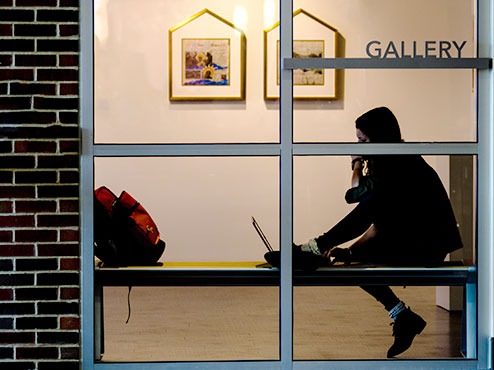
Alternate degree completion option
Accelerated
Fast track your way to a master’s by taking graduate courses as an undergraduate student. Course credits count toward both degrees. Apply for the accelerated option after your sophomore year.
Career opportunities for Art History
According to the U.S. Bureau of Labor Statistics, employment for archivists, curators and museum workers is projected to grow 11% from 2019 to 2029, faster than most other occupations. This growth is attributed to archival information storage needs as well as increased public interest in science, art and history.
Admission requirements and application process
- Submit an application for admission. It is free to apply.
- Request that official transcripts from all current and previous institutions you’ve attended are sent directly to the Carlow University Office of Admission.
Apply
anytime
Start terms:
Fall, Spring & Summer
Art History faculty

Amy Bowman-McElhone, PhD Department Chair; Director & Curator at Carlow University Art Gallery; Assistant Professor

Kimberly McMahon, MA Adjunct Lecturer

Sarah Zeffiro Program Director, Instructor of Art Education

Ethan Gagorik Adjunct Lecturer, Art

Kathy Kienholz Adjunct Lecturer, Art

Debra Kahler Adjunct Lecturer, Art
Contact Admissions
If you are interested in this major, our Admissions team is available to help you with the next steps, including scheduling an on-campus visit or attending an upcoming event.
Minor in Art History
You can explore your interest in humanity’s creative history with a minor in Art History from Carlow University. In this program, you will gain an entry-level understanding of the elements of art and design, as well as an overview of Western art history.
You will create art while becoming acquainted with both the theory and practice of art and understanding art in context, learn how to critically engage with artwork and further develop your appreciation of art.
Art history curriculum
A minimum of 18 credits is required, 9 of which must be taken at Carlow.
Required courses inlcude:
- Introduction to Art/Visual Culture I and 2
- Women and Art
- 3 additional art history courses
Shape your future with a ceramics major
With a Ceramics major, you will learn techniques of two-dimensional art, ceramics and sculpture. The major will prepare you for a studio career or graduate school.
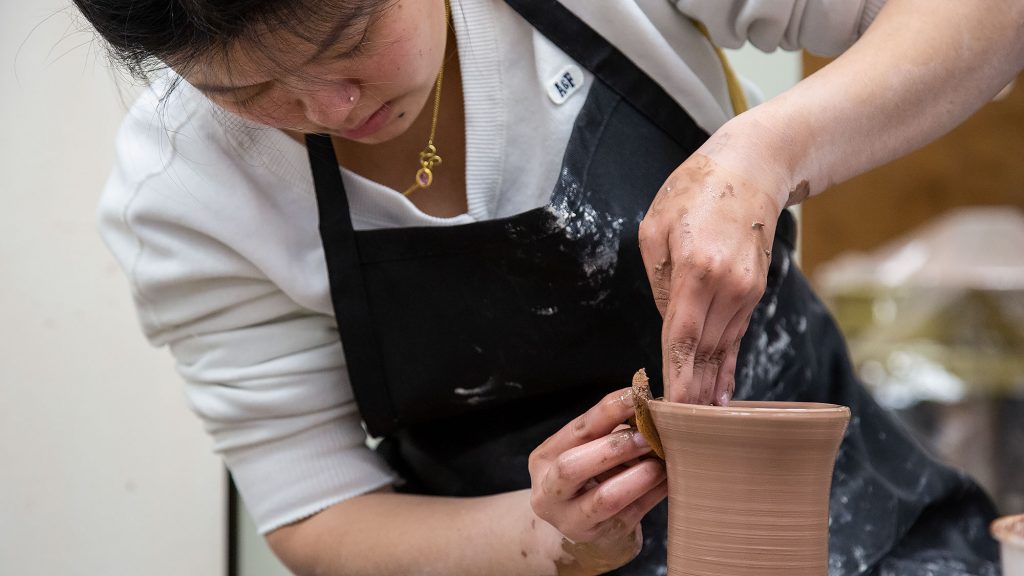
Degree:
Bachelor of Arts
Delivery:
On campus, some online
Campus:
Oakland
Transfer credits:
Up to 90 credits
Ceramics degree curriculum
The ceramics degree curriculum allows you to learn high-level skills and develop your artistic voice, focusing on your area of interest in ceramics. In addition to learning ceramic skills such as wheel throwing, handbuilding, glazing and firing, you will study drawing, art history and design, giving you a well-rounded foundation.
Quick facts
- Learn 2D and 3D art fundamentals
- Be prepared for studio practice or a master’s degree
- Gain professional experience in Carlow’s on-campus art gallery
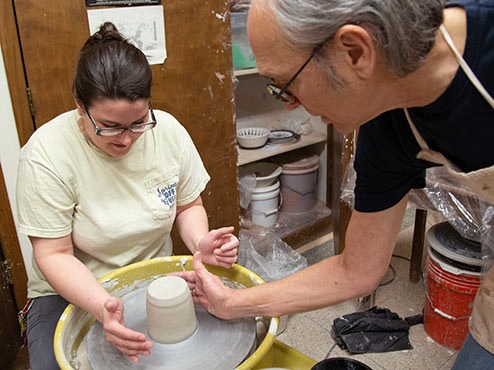
Alternate degree completion options
Accelerated
Fast track your way to a master’s by taking graduate courses as an undergraduate student. Course credits count toward both degrees. Apply for the accelerated option after your sophomore year.
Career opportunities for Ceramics
Graduates with a ceramics degree have been successful in studio practice and gaining admission to master’s programs.
According to the U.S. Bureau of Statistics, job growth is slated to change little for craft and fine artists from 2019 to 2029. Though an uptick in arts positions and opportunities is largely based on economic factors, many ceramics artists start their own small businesses.
Admission requirements and application process
- Submit an application for admission. It is free to apply.
- Request that official transcripts from all current and previous institutions you’ve attended are sent directly to the Carlow University Office of Admissions.
Apply
anytime
Start terms:
Fall, Spring & Summer
Ceramics faculty

Amy Bowman-McElhone, PhD Department Chair; Director & Curator at Carlow University Art Gallery; Assistant Professor

Kimberly McMahon, MA Adjunct Lecturer

Sarah Zeffiro Program Director, Instructor of Art Education

Ethan Gagorik Adjunct Lecturer, Art

Kathy Kienholz Adjunct Lecturer, Art

Debra Kahler Adjunct Lecturer, Art
Contact Admissions
If you are interested in this major, our Admissions team is available to help you with the next steps, including scheduling an on-campus visit or attending an upcoming event.
Minor in Ceramics
You can work with your hands and master the essentials of two-dimensional art and sculpture, supplementing your art education with a minor in Ceramics from Carlow University. You will gain a well-rounded perspective on creativity in ceramics and refine your technical skills by working in the university’s art studio spaces, including three semesters in the Advanced Ceramics Studio working with different materials, techniques and kilns.
Ceramics curriculum
A minimum of 18 credits is required, 9 of which must be taken at Carlow.
Required courses include:
- Basic Art and Design
- Sculpture
- Ceramics
The exciting world of advertising, marketing and media awaits you
Gain a competitive edge with a graphic design degree from Carlow University. You’ll develop a mastery of visual concepts and sought-after professional skills such as critical thinking and problem-solving to lay a foundation for success in the field.
Graphic design students work with industry-experienced faculty and industry-standard design software.
You can adapt your graphic design learning experience to suit your personal interests. If you’re planning a career as a freelancer, classes will help you master the skills needed to be successful.
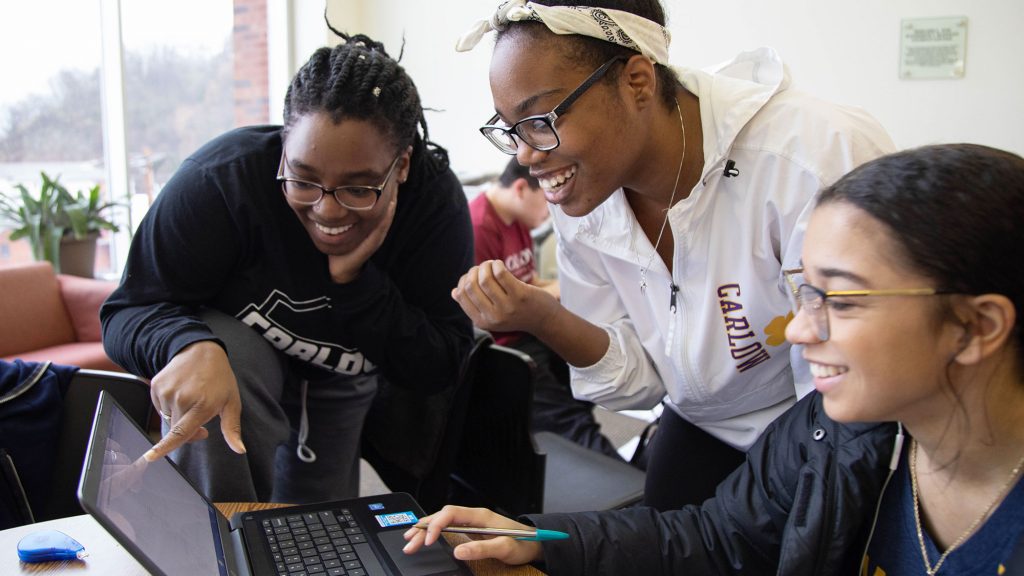
Degree:
Bachelor of Arts
Delivery:
On campus, some online
Campus:
Oakland
Transfer credits:
Up to 90 credits
Graphic design degree curriculum
You will learn best business practices and get hands-on experience with such software as Adobe Photoshop, Illustrator, InDesign and After Effects in 2D and 3D studio spaces such as the Media Arts and Design Studio. In advanced-level classes, you will adapt your learning experience to your interests. At this stage, a mentorship program is available.
As part of your graphic designer education, you will develop and refine a portfolio and create an online presence on social media. Instructors will provide one-on-one guidance to help you demonstrate your unique skills and style.
Many graphic design students complete professional internships and independent design projects.
Quick facts
- Work with industry-standard design software
- Develop and refine a portfolio
- Tailor advanced classes to your interests
- Intern with a company or work on independent design projects
- Gain professional experience in Carlow’s on-campus art gallery

Alternate degree completion option
Accelerated
Fast track your way to a master’s by taking graduate courses as an undergraduate student. Course credits count toward both degrees. Apply for the accelerated option after your sophomore year.
Career opportunities for Graphic Design
With a graphic design degree, you can pursue a career in such fields as advertising, marketing and communications, and specialized design services. Students have landed jobs with art guilds and county offices, or have become exhibiting artists.
According to the U.S. Bureau of Statistics, employment for graphic designers is expected to grow 4% from 2019 to 2029. Though this growth is about average, those in the field should keep an eye out for competition in their job search.
Admission requirements and application process
- Submit an application for admission. It is free to apply.
- Request that official transcripts from all current and previous institutions you’ve attended are sent directly to the Carlow University Office of Admissions.
Apply
anytime
Start terms:
Fall, Spring & Summer
Graphic Design faculty

Amy Bowman-McElhone, PhD Department Chair; Director & Curator at Carlow University Art Gallery; Assistant Professor

Kimberly McMahon, MA Adjunct Lecturer

Sarah Zeffiro Program Director, Instructor of Art Education

Ethan Gagorik Adjunct Lecturer, Art

Kathy Kienholz Adjunct Lecturer, Art

Debra Kahler Adjunct Lecturer, Art
Contact Admissions
If you are interested in this major, our Admissions team is available to help you with the next steps, including scheduling an on-campus visit or attending an upcoming event.
Earn your Media Arts and Animation degree
Passionate about art? Use your drive and polish your skills with an animation major from Carlow University. You will learn the essential skills to work with new media technologies, including animation software and digital storytelling.
Working with faculty who have field experience, you will master advanced principles of 2D and 3D computer animation and become proficient in animation software. You can supplement your education with creative classes like creative writing and gestural studies.
With a program adapted to your own academic interests, you can dive head first into experimental animation, conveying your ideas with mixed media and different approaches to digital technology.

Degree:
Bachelor of Arts
Delivery:
On campus, some online
Campus:
Oakland
Transfer credits:
Up to 90 Credits
Media Arts major curriculum
You will gain a professional edge by working with industry-standard animation software, including Adobe Creative Suite, ZBrush and Toon Boom. Media arts and animation includes graphic design work with digital photography and digital illustration in the 2D and 3D studios and the animation lab.
You will develop and refine a digital portfolio under the guidance of faculty who will help ensure your portfolio demonstrates your unique media arts and animation style. The portfolio will prepare you for entry-level employment in the field.
Required media arts and animation coursework will teach you how to successfully manage your own freelance business. The Creative Freelancer, a required course, involves professional practice and teaches creatives how to market themselves.
Quick facts
- Become proficient in essential software such as Adobe Creative Suite and ZBrush
- Develop and refine a media arts and animation portfolio
- Access facilities like the 2D and 3D studios
- Learn how to successfully manage your own freelance business
- Gain professional experience in Carlow’s on-campus art gallery
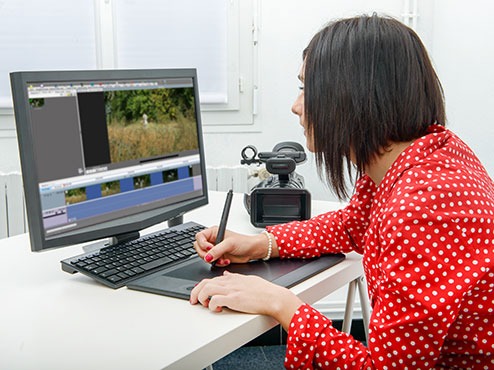
Career opportunities for media arts and animation
Students have gone on to work for ad agencies, public relations firms and school districts, and to study in graduate programs.
According to the U.S. Bureau of Statistics, from 2019 to 2029, employment for multimedia artists and animators will grow 4%, largely fueled by the demand from the movie, television and video game industries.
Admission requirements and application process
- Submit an application for admission. It is free to apply.
- Request that official transcripts from all current and previous institutions you’ve attended are sent directly to the Carlow University Office of Admissions.
Apply
anytime
Start terms:
Fall, Spring & Summer
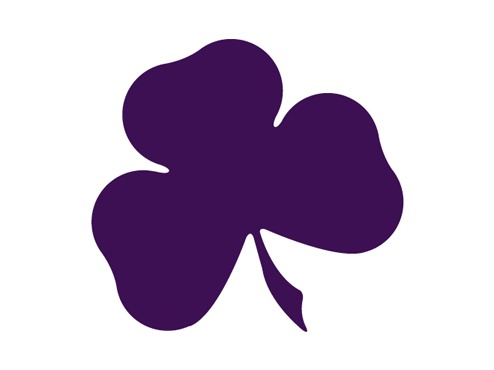
Expand your skill set
Art major James Balsimo ’22 said Carlow’s Media Arts and Animation program gave him the freedom to express himself. Additionally, “I learned the global history of animation as well as the necessary components to navigate the modern animation industry. The program also covers other important aspects such as graphic design and digital illustration that have expanded my skill set.”
Media Arts & Animation faculty

Amy Bowman-McElhone, PhD Department Chair; Director & Curator at Carlow University Art Gallery; Assistant Professor

Kimberly McMahon, MA Adjunct Lecturer
Contact Admissions
If you are interested in this graduate program, our Admissions team is available to help you with the next steps, including scheduling an on-campus visit or attending an upcoming event.
Cultivate the artist in you and nurture your aesthetic spirit
Mastery of the elements of form is essential to becoming a great artist. With a Bachelor of Arts in Painting and Drawing from Carlow University, you will cultivate a solid foundation in technique, form and concept.

Degree:
Bachelor of Arts
Delivery:
On campus, some online
Campus:
Oakland
Transfer credits:
Up to 90 credits
Painting and drawing major curriculum
You will spend six semesters studying painting in depth, and will examine more advanced issues centered around two-dimensional art and concept development through still life and landscape, figure, street art and illustration.
As you advance in the major, you will be able to participate in a mentorship program and focus your educational experience on your personal interests. On-campus instruction includes access to the 2D studio.
Quick Facts
- Tailor advanced classes to your interests
- Be mentored by instructors
- Put your skills to work in our art studios
- Gain professional experience at our on-campus art gallery
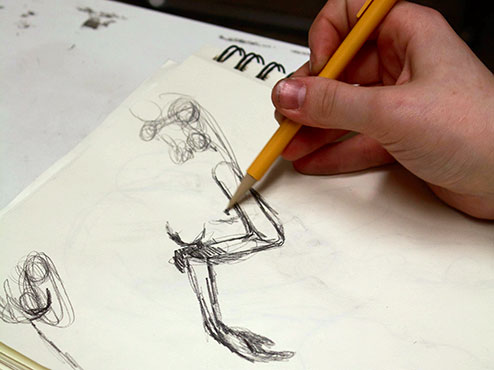
Alternate degree completion option
Accelerated
Fast track your way to a master’s by taking graduate courses as an undergraduate student. Course credits count toward both degrees. Apply for the accelerated option after your sophomore year.
Career opportunities for Painting and Drawing
According to the U.S. Bureau of Statistics, from 2019 to 2029, employment for multimedia artists and animators will grow 4%, largely fueled by demand from the movie, television and video game industries.
Admission requirements and application process
- Submit an application for admission. It is free to apply.
- Request that official transcripts from all current and previous institutions you’ve attended are sent directly to the Carlow University Office of Admissions.
Apply
anytime
Start terms:
Fall, Spring & Summer
Painting & Drawing faculty

Amy Bowman-McElhone, PhD Department Chair; Director & Curator at Carlow University Art Gallery; Assistant Professor

Kimberly McMahon, MA Adjunct Lecturer

Sarah Zeffiro Program Director, Instructor of Art Education

Ethan Gagorik Adjunct Lecturer, Art

Kathy Kienholz Adjunct Lecturer, Art

Debra Kahler Adjunct Lecturer, Art
Contact Admissions
If you are interested in this major, our Admissions team is available to help you with the next steps, including scheduling an on-campus visit or attending an upcoming event.
Minor in Painting and Drawing
You can develop your appreciation of art and painting and hone your skills with a Painting and Drawing minor from Carlow University. You will explore the use of color, space, light and other critical elements of art and learn about perspective and spatial relationships.
Painting and Drawing curriculum
The minor requires a minimum of 18 credits, 9 of which must be taken at Carlow.
Required Courses
- Basic Art I/Drawing 1 and 2
- Painting 1
- 3 semesters of Advanced Painting Studio
